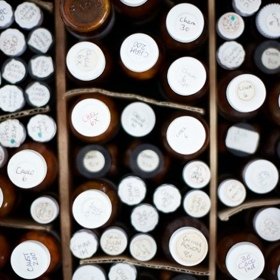
Homeopathy sees allergies as resulting from an internal imbalance, especially of the immune system. Substances causing allergy symptoms in one person are harmless to someone with a healthy immune system. Homeopathy therefore aims to remove the individual predispositions that caused the allergies.
The homeopathic body of research has identified over a hundred remedies that are used to treat allergies and hay fever effectively. However, their indications differ, depending on the individual’s symptoms, and a remedy that’s right for one person may not be right for another.
It’s therefore best to consult a homeopath to ensure a positive and lasting result. The practitioner will prescribe an individually tailored course of treatment, based on medical history, constitutional traits and the allergy’s symptoms.
Homeopathic remedies are highly diluted natural substances, mostly plant and mineral. The pharmaceutical preparation process removes all toxic effects, so the treatments are easy, gentle and safe for all people, including children and pregnant women.
The following are a few of the more commonly used homeopathic remedies for the acute symptoms of hay fever. Only one remedy can be used at a time, so the patient’s specific symptoms need to match as closely as possible the remedy symptoms described below:
EUPHRASIA – Eyes inflamed, irritated, burning and itching; very sensitive to light. Bland discharge from nose, acrid from eyes. Symptoms feel worse in the morning and from warm breezes; better at night on lying down. There may also be a constant tickling cough, which is better while lying, and worse in the daytime.
ALLIUM CEPA – Begins with sneezing, increasing in frequency. Watery acrid discharge drips from nose; irritates lip and nostrils. Bland watery discharge from eyes. Symptoms begin on the left side and go to the right. Hay fever every year in August: very sensitive to odour of flowers and skin of peaches. Worse in damp, cold windy weather.
ARSENICUM ALBUM – Acrid watery discharge dripping from nose, which is totally blocked. Right side worse than left. Burning pain in nose, eyes and throat, ameliorated by heat or hot drinks. Sneezing from tickling in one spot. Better in a warm room, from warm drinks, worse from cold air.
GELSEMIUM – Violent sneezing, face hot and flushed. Nose blocked with feeling of great weight and tiredness in whole body and limbs. General weakness; heavy eyelids.
NATRUM MURIATICUM – Profuse watery discharge from eyes and nose, worse in open air and wind. Chapped lips and cracks at the corners of mouth. Loss of taste and smell. Worse in the sun; better at seaside. Desire for salty foods during hay fever.
NUX VOMICA – Prolonged attacks of sneezing, in morning, on rising. Nose runny in morning and daytime; blocked, dry and raw at night and in bed. Irritation in nose, eyes, with hot feeling in face. Patient is very irritable and very sensitive to cold.
PULSATILLA – Fluent, bland discharge from nose and eyes,which may turn yellow later on. Itchy eyes, better for cold applications. Symptoms are worse being overheated. Worse in open air (very sensitive to all pollens, dry hay, ragweed), but better in air-conditioned environment. May be accompanied by hay asthma, with wheezing and cough worse on lying down.
SABADILLA – Violent sneezing; with copious watery discharge. Worse in cold and better in heat and with warm drinks. Nostrils stuffed up: inspirations through nose laboured: snoring. Severe frontal pains and red eyelids. Very sensitive to pollens of flowers; also to smell of garlic.
WYETHIA – Itching of nose, throat and especially of palate; for relief patient must draw tongue back and forth over soft palate; with runny nose, sneezing, etc. Itching extends to ear. Throat swollen, constant clearing of throat.
HOW TO TAKE THE REMEDY:
Homeopathic remedies come in different strengths, called potencies, but for self-prescribing it is recommended to use either potency 6c or 30c. Three pills should be dissolved in a 500 ml bottle of still mineral water and the patient should take a sip from it 3-5 times a day. The bottle should be shaken 5-6 times before each sip. Stop when symptoms are much better and start again if there is a relapse.
If no improvement is noticed after a day or two, it is most likely that the incorrect remedy was chosen. Given that there are more than 100 homeopathic remedies used in hay fever, the best option is to seek professional treatment with a trained homeopath.
By Aurora Yaacov, LLCCH, MARH, RHom
Homeopath at Shine Holistic
If you’d like to explore the subject further click here to read this interesting scientific study ‘A Review of Homeopathic Research in the Treatment of Respiratory Allergies’ published in the AMR (Alternative Medicine Review) in 2010.



